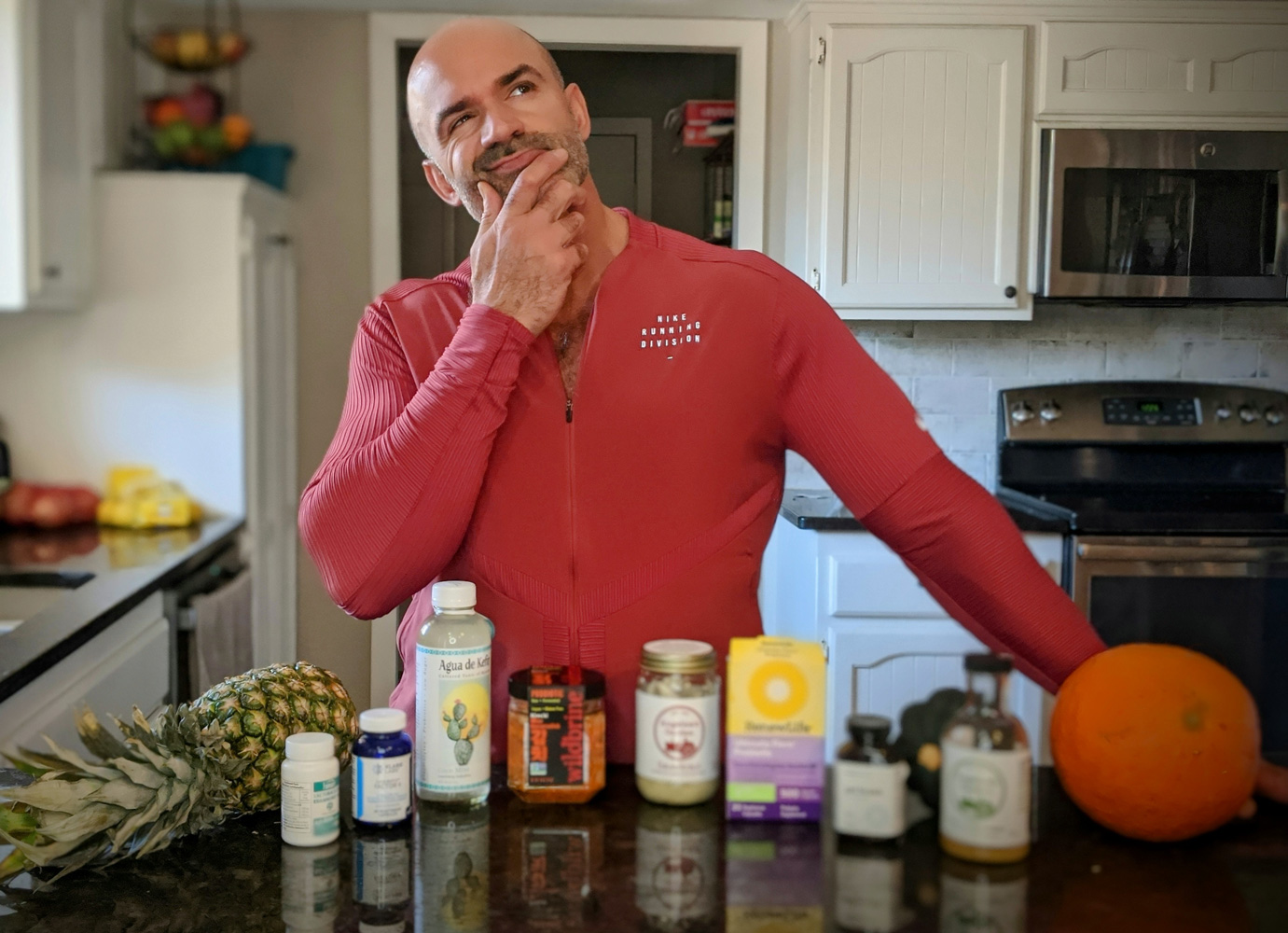
The big wide world of probiotics!
You are not alone if you are wondering the answers to these questions. From my experience and in my many countless hours of research on the subject of probiotics I’ve come to a realization that our understanding of effective use of probiotics is still in its infancy and we don’t have a significant amount of conclusions with certitude.
However, one conclusion I have made is that the optimization of our microbiome and knowledge of how to strategically manipulate it is a critical area of health to master if our goal is to attain peak human physiology.
I’ve heard all the platitudes and talking points on this subject and my hope is this article will offer some new and valuable insights as opposed to common talking points.
Firstly, does our microbiome really play as significant of a role in our well-being as the hype would have us believe? Well here is just one question that will help you realize the impact our microbiome can have on us which the lay-person can relate to without having done any research. Have you ever had food poisoning? The effects our microbiome has on our health in the case of food poisoning are pretty profound.
What’s more, we can wield the strategic use of probiotics like a weapon in this case, literally. For instance if you have food poisoning you can ingest a high amount of kefir and commensal bacteria to overwhelm and kill off the bad bacteria to clear your food poisoning symptoms significantly sooner.
Another example, of strategic use of probiotics resides in the emerging scientific playground of the single strain. With regards to our smart phones you’ve hear the term, there’s an app for that. Well for some conditions and health needs more and more we’ll be hearing, there’s a strain for that.
You’ve got constipation? There’s a strain for that. Try Propionibacterium Freudenreichi.
Healthy gut flora make more substances absorbable because they produce their own enzymes which further break down food into component parts.
Opportunistic or bad bacteria help make you fat, sluggish and fatigued. This makes sense because what we label as good bacteria help generate beneficial acids and one of the benefits we receive from these acids is nutrient absorption. When we are absorbing nutrients our cells aren’t demanding more food because their needs are met thus we have less hunger pangs. Bad bacteria can compete for space with this good bacteria and minimize these beneficial effects.
Commensal bacteria secrete enzymes like cellulase and hemicellulose that break down fibers into simple glucose molecules and ferment them to produce the beneficial acids that help keep us healthy.
Our flora produce acids that keep candida under control turning off the gene that keeps it in its benign yeast form as oppose to its pathogenic fungal form.
The list goes on and on. You can see how this topic can get pretty intimidating pretty quickly as there are so many, strains, companies, health conditions and other variables.
To help simplify and guide my research I’ve approached probiotics by asking the question, what enterotypes are found in the leanest, longest lived humans, and how can we best get the bacteria within those enterotypes? Enterotyping is the categorization of people based on the species of bacteria that are most prolific in the makeup of their flora. Similar to how mesomorph, ectomorph and endomorph are categorizations of people based on their body composition/type.
What Enterotype correlates greatest with the leanest longest lived human’s? Gut symbionts. In particular, Bifidobacterium. For the sake of the size of this article I’ll save the details and benefits of gut symbionts like Bifido for another article as I feel my readers will benefit more from a more fundamental understanding of probiotics. Nonetheless, this enterotype should be noted.
Let’s address that first question I asked in the opening of this article, what is a probiotic? A probiotic is a living bacteria, a prebiotic is a food that feeds bacteria and if those are combined they are called symbiotics. Finally a postbiotic is a molecule produced by probiotic bacteria such as short chain fatty acids.
What Probiotics are best?
The best probiotics are, cultured foods and the bacteria found on the foods from our gardens. I is no wonder we see so much dysbiosis today, because suppliers triple wash their vegetables before we can purchase them at the grocery store, killing off even the commensal bacteria. I am not saying they shouldn’t do this as shelf life and food safety trump the composition of commensals on many of our foods. However, add to that much of our animal products contain antibiotics which kill off our flora. There is an now an obsession with hand sanitizer and sanitization in general today which also kill off good bacteria, expose us to toxins and weaken the immune system. High chronic stress and processed foods, which are all abundant in our modern habitat also all greatly affect our microbiome. But I digress.
Cultured foods and vegetables from the garden or farmers market are some of the best probiotics. For one, you know they are live strains and have a greater diversity of strains. I personally do not trust a lot of the probiotic capsules. I don’t know how long they’ve been on the shelf, nor what conditions they’ve been exposed to. Most of them are capsuled in a dry environment. Bacteria like wet moist environments.
Kefir has some 20 odd strains plus some beneficial yeast, you’ll get higher levels of active bacteria with that than you would out of a capsule.
That is important because when it comes to getting adequate bacteria it is a numbers game. the acid in your stomach will kill off some bacteria upon entry but there will always be survivors and the higher levels you ingest to begin with usually amounts to higher odds for the good bacteria to get through the stomach and colonize the intestines where the ph is higher.
This is also why it is good to drink a lot of water when you take a probiotic. Why? Because the water will dilute your stomach acid. If there is ever a time to drink alkaline water it is specifically when you are trying to increase the numbers of bacteria or colony forming units (CFUs) in your gut via probiotics.
Speaking of CFUs lets clear up a little more esoteric speak. You’ll notice the bottle might say 8 strains or 14 strains. What people’s eyes gravitate to is the 50 billion!
The strains are the different types of bacteria and the 50 billion are the approximate number of cells or “soldiers” fighting for you.
Even if you take these probiotics and cultured foods you still won’t replace the thousands of strain of beneficial bacteria that harbor your body. Even antibiotics are not killing off all the beneficial bacteria because there will always be survivors.
So it is my reasonable belief that your primary strategy should be to focus more so on stimulating the growth of those survivors with prebiotics.
We already know that most bacteria when they hit the stomach are going to be killed off. Thus the best thing is to feed the soldiers already behind enemy line so they can grow and get strong and fight for you.
Trying to send reinforcements isn’t going to do a lot of good if you are killing the reinforcements upon entry.
This understanding now shifts where a lot of my focus is; from a consideration of the best probiotics towards the best prebiotics.
Raw plant fiber, phenols from fruits, and resistant starches are the main food supply for our commensal bacteria.
Now don’t go out and start eating large amounts of raw plant fibers, and beans if this is something you are not accustomed to, as most of us today have leaky gut. These fibers have a lot of cellulose which can damage the intestinal lining and make that leaky gut worse. In these cases the carnivore diet or soft fibers like flax, or hemp or really cooked down and softened vegetables are best until you’ve strengthened your intestinal barrier and have built up adequate amounts of commensal bacteria.
Another word of caution. If you are taking supplemental enzymes just be aware of when to take them. Enzymes contain compounds like cellulase and hemicellulose that will break down a lot of the foods we ingest into simple sugars.
They’ll digest the fibers in your stomach long before they reach the colon. This creates a scenario where the supplemental enzymes are breaking down these fibers into simple sugars. You are then absorbing these sugars and using them as energy or fat storage, meanwhile starving out your flora.
I’ll end with this important point. At the beginning of this article I noted how complex and confusing the world of probiotics is. This confusion applies not only to probiotics but for most health topics. Nobody has the body completely figured out. I’ve been taught by one of my mentors, Joel Greene how to test if what I am learning is potentially good information or bad information. This test works indiscriminately and without regard to the authority figure espousing the information. If you want to have a more discerning compass to the true north of health and fitness, learn to spot the baby talk. Dairy bad, plants good, meat bad, meat good, probiotics good, probiotics bad, ga-ga goo goo.
Your discerning compass should help you understand that when it comes to health, any given thing has biological duality and can be both good and bad depending on amounts, times, conditions, person and goals. Biological duality helps show us that balance or homeostasis reigns supreme when it comes to achieving optimal health. This certainly applies to our microbiome and the use of probiotics and prebiotics.
